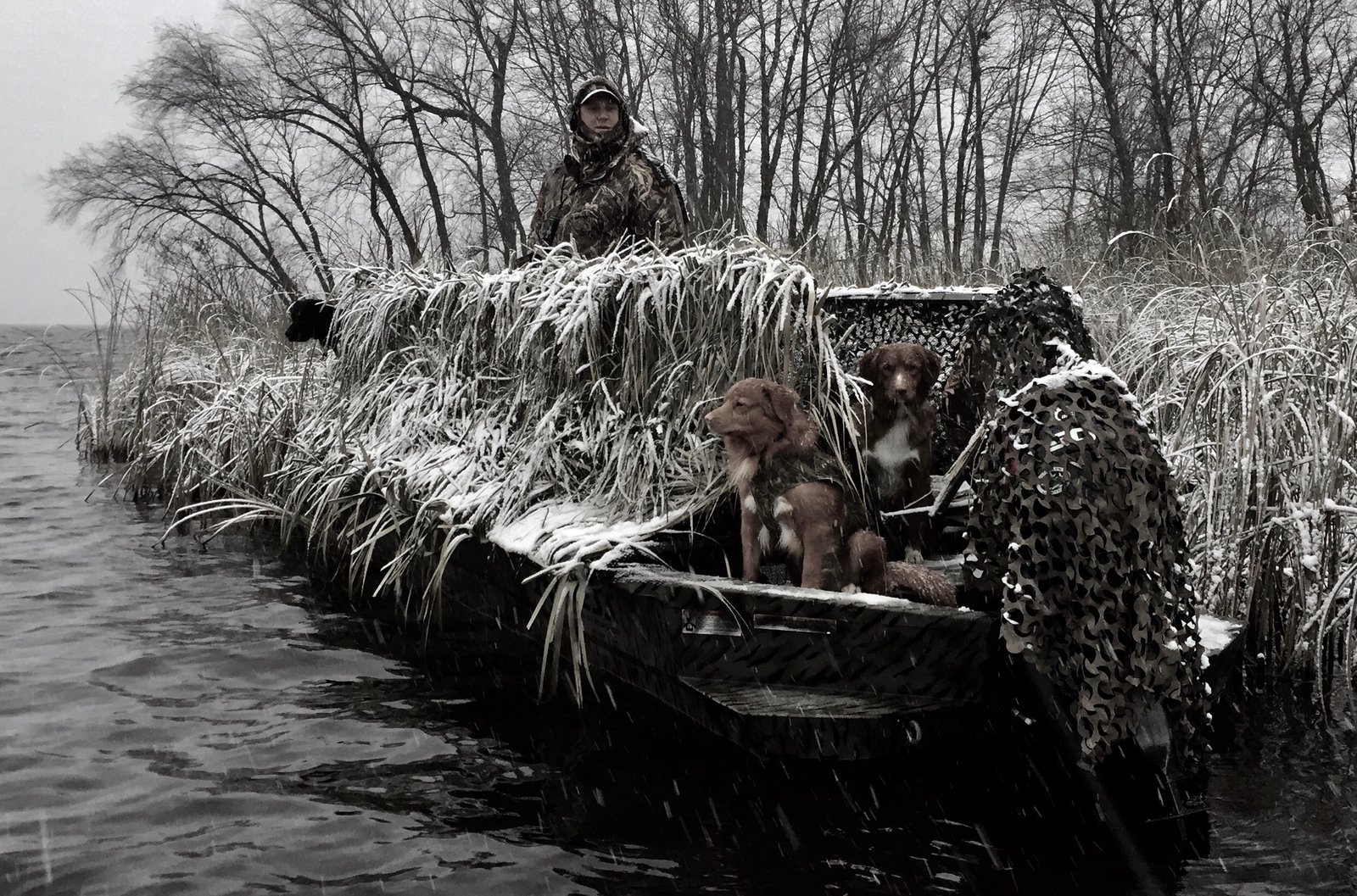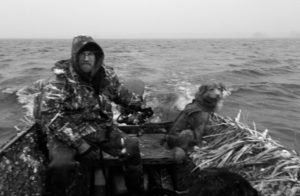An article from WWA’s Words From The Wardens.
This article originally appeared in Wisconsin Waterfowl Association’s December 1, 2018 eNewsletter.
By WDNR Conservation Wardens Dale Hochhausen of the Mississippi River Team and Ben Mott of Waushara County
When it comes to cold-weather duck hunting, the top priority is warmth – yours and your dog! We’ve compiled some of our tips to stay safe and warm so you can enjoy your hunts. Being cold can ruin a hunt pretty fast, so let’s avoid that with some easy-to-use tips.
“My hands and feet get cold easy, especially as I get older”, Warden Dale said. “Hunting ducks during the last few weeks of the season can bring on challenging weather conditions, which is when the die-hard hunters are still out.” Warden Ben agrees, and as someone who hunts with dogs, he says it is best to think of those hunting mates, too.
Both wardens say whether you are thinking of yourself – or you and your dog – layering will be key. Even for a dog, you ask? Don’t they come with a coat? “True, most retriever breeds with a proper coat are protected from the cold to some extent. Double-coated breeds offer protection in extreme temperatures, both hot and cold, but adding a neoprene jacket to your canine friend offers them multiple benefits,” Warden Ben said. “Vests offer a layer of protection from the wind when the dogs are out of the water, allows them to not lose as much heat, allows them to actually warm the water that is left in their coat more efficiently instead of that water turning to ice. And, if the dogs are breaking ice during a retrieve, the vest can protect the dog from becoming cut up.”

Comet enjoys some late season waterfowling in 2017. Comet, who was owned by waterfowler Jeff Martz, sadly passed away recently.
Warden Dale’s tips:
- Dress in layers: Put the clothing’s moisture wicking layer next to your skin. Not just your body core (upper and lower body), but also your feet. This is vitally important.
- What about your head? I don’t wear ball caps later in the season. I switch to stocking hats when the temps turn cold. Look for stocking hats with bills, to keep the sun out of your eyes. If it’s really cold out and/or windy, wear a face mask or balaclava.
- Gloves or mittens? While hunting, you typically have to wear gloves versus mittens. This is one area I will spend a little extra money to buy good insulating gloves that shed water. If it’s raining and/or snowing out, it’s important to carry several sets of gloves. Why? Because once your gloves get wet, it’s impossible to keep your fingers warm in cold temps. At least that’s true of mine as I don’t have those big sausage fingers that stay warm!
- Budget warmth: Hand-warmers and toe-warmers to help keep extremities warm. They’re a cheap investment to help stay warm.
- Waders: Heavy insulated waders are important, probably 600-800 gram minimum, depending on how well the person can take the cold. I don’t have neoprene waders because I also use my chest waders in the early season. However, the butts have 600 grams of insulation. I wear wader pants inside these chest waders, which are very warm. Plain rubber knee boots or chest waders offers no insulation, especially once you start wading around in the water.
- Dry your clothes between multiple day uses: If you hunt multiple days in a row, make sure you put your waders and/or boots on a dryer. There can be moisture in the boots which isn’t going to help with staying warm.
- Float coat, 4-season jacket and a rain jacket: If you’re out in a boat, wearing a float coat not only provides flotation, but offers good insulation and sheds water. I routinely wear a float coat while I’m working from a boat in late fall and early winter. If it’s raining or snowing, even though you may have a waterproof 4-season-type waterfowl jacket, it’s beneficial to wear a rain jacket on the outside everything to help shed water and stay dry.
- Take your phone: Cell phone in a plastic bag or waterproof carrying case.
- Tell someone of your hunting/travel plan: If traveling by boat, let someone know where you’re going and when you’ll be back. Monitor weather conditions and if weather conditions get too bad, there is no duck worth risking your life over.

Jeff Martz hunting with his late dog Comet (far left) and Warden Mott’s two Tollers, Grizzly (front) and Leinie
Warden Ben’s tips to keep your dog safe and warm:
- Behavior clues: Whether you use a vest or not for your dog, you need to be paying attention to little things. Watch for uncontrollable shaking/shivering. Watch for the dog to change their behavior – if your dog never hesitates to retrieve and one time they do – they may be telling you it’s time to stop.
- Pack a towel: Have a towel for your dog to remove that excess water between retrieves. You know how chilled you get when your skin is wet and the cold air hits it. Same thing happens to your dog. So, dry them off.
- Heat that blind: If hunting from a blind, even a small blind heater can do wonders for you and the dog’s ability to stick it out on those late season days.
- Hypothermia watch: Remember the water is cold and can take more out of your dog than you might expect. We all want to have the tough retriever that never stops even with icicles forming on their face and coat – but remember they have limits, too. Sometimes it’s up to us to realize what those limits are before it’s too late. If you do get into a situation where your dog may be reaching hypothermia, contact your local or emergency vet as soon as possible for how to proceed.
Some of the best days waterfowl hunting can be those late season hunts, but they also can turn dangerous in a hurry. Taking a few of these steps can keep you safe and keep you hunting a little bit longer.



